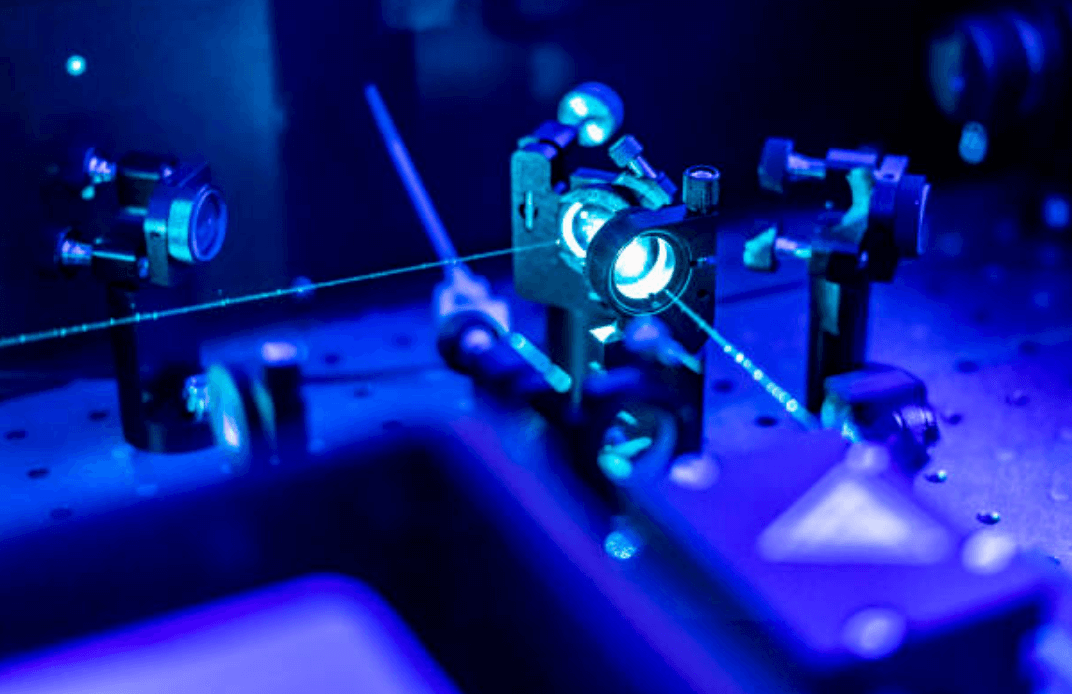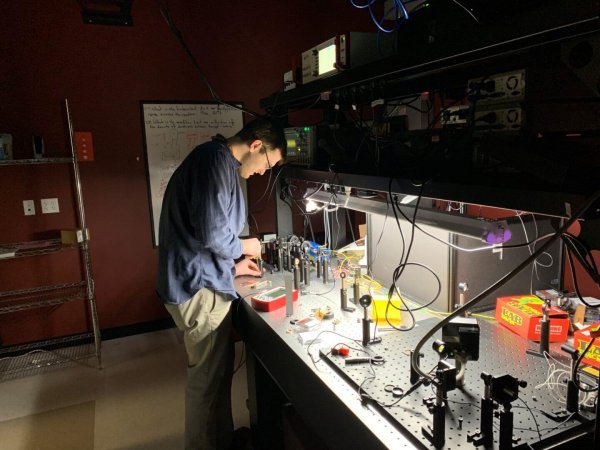Let There Be Light (and Let It Tell a Story)
When we think of information, we think of bits and bytes, computer algorithms and communication networks. But information is physical, stored on physical things like electrons, RF radiation, even water and light.
“In order to get a full understanding of information, you have to understand the physics of information-carrying entities — and this is rooted in quantum mechanics,” said Jonathan Habif, an experimental physicist at USC Viterbi’s Information Sciences Institute (ISI).
Habif believes this research can help us recognize things at much dimmer light levels than previously thought possible. It would allow for the development of higher-resolution cameras and the detection of communication signals coming from deeper in space. Other applications could include quantum cryptography that uses the strange quantum states of light to ensure secure data transmission through untrusted channels.
Late last year, Habif opened the Laboratory for Quantum Limited Information (QLIlab) at USC ISI in Boston. While ISI has traditionally worked in classical information sciences, the new lab seeks to understand the fundamental limits set by the laws of quantum mechanics of how much information can be stored on and extracted from quantum mechanical particles of light called photons.
A photon can carry a message from Boston to the South Pole at 186,282 miles per second over channels such as fiber optics. But the leap from little dancing photons to “Wow, I can store data on this ray of light and shoot it into space” demands an understanding of what happens to that information when using strange quantum states of light such as quantum entanglement — a very fragile quantum state shared by more than one quantum particle.
Albert Einstein referred to entanglement as “spooky action at a distance” because these particles share a deep interrelationship irrespective of their separation in space or time. According to the laws of quantum mechanics, entangled photons can be created and separated by galactic distances, and this deep interrelationship will persist.
This research has profound implications for the generation, transmission and measurement of information. QLIlab’s mission is to discover what happens to that data-carrying photon in an environment where there isn’t very much light at all, an abysmal world that Habif calls “a photon-
starved regime.”
Imagine you’re on Mars and sending a “Hello, Mom!” message back to Earth. It would take about 14 minutes to transmit.
“If you’re the receiver, you’re getting a very faint trickle of maybe one or two photons,” Habif explained. “We’re trying to figure out how to extract ‘Hello, Mom!’ from just these two photons traveling through time and space.”
To engineer quantum light, Habif starts out with a laser that generates a lot of photons. “We then throw almost all of those away,” he said.
With what’s left, he generates a very weak signal of light and encodes it with information either by bouncing it off a target or imprinting it using electro-optic devices. Habif can detect this signal using very sensitive optical detectors, such as single photon detectors capable of picking up one single photon and ultrasensitive cameras that allow him to process images in extremely low light.
To generate entangled light, he shoots a strong laser pulse through a special type of crystal. Inside the crystal, light goes thorough an interaction where it generates two photons that share this very special quantum entangled state.
“The exciting thing for us is that the standard optical detectors in use today are not at the quantum limit, so if you want to make this discrimination with very weak light, nobody knows how to do it,” Habif said. “By understanding the richness of the quantum state of light, we can invent new receivers that are much more sensitive than those we’ve been using for generations.”





